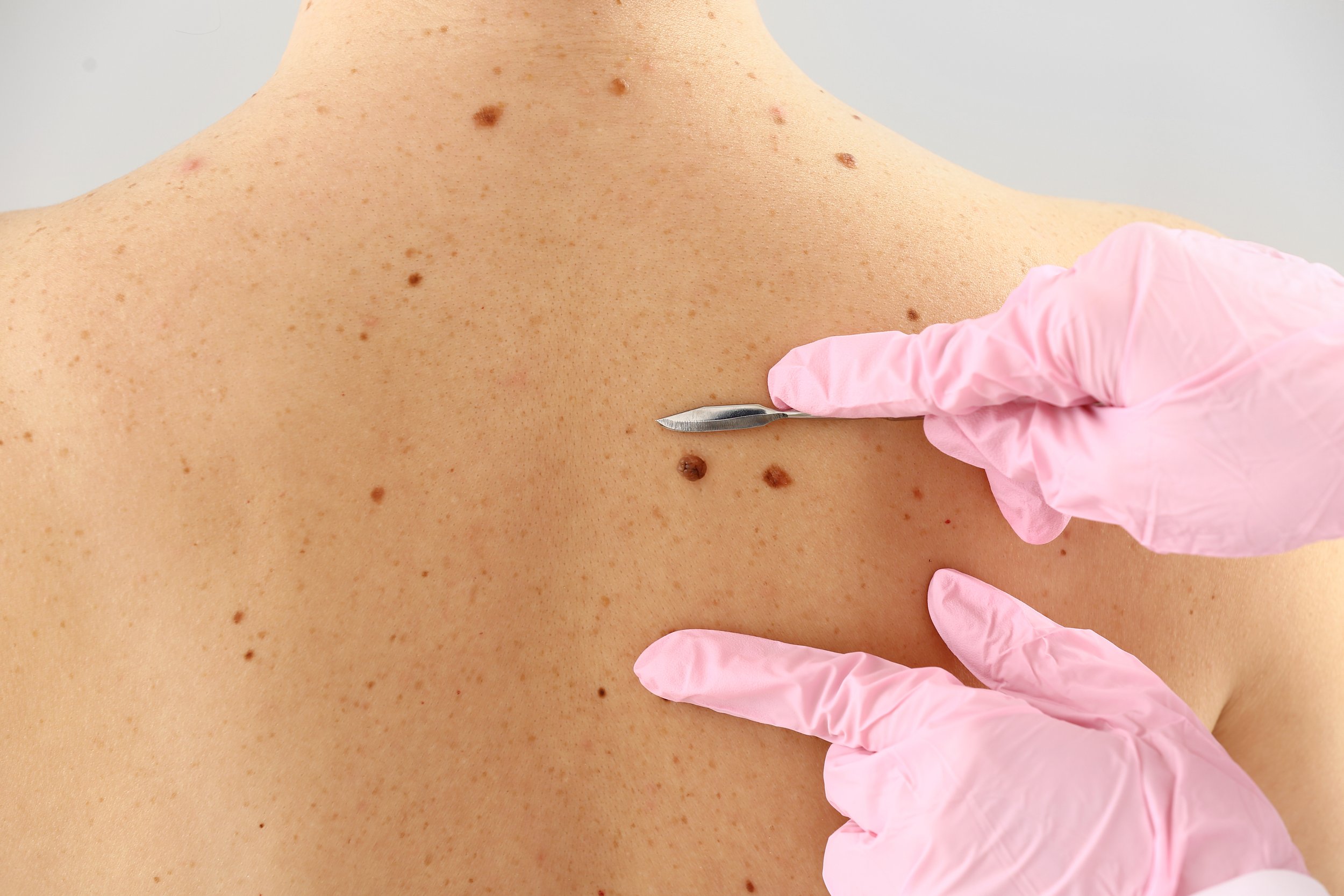
Surgical Dermatology
Skin Cancer is what drove Dr. Taylor to become a dermatologist and she prides herself on early detection of melanoma and non-melanoma skin cancers. She provides thorough skin examinations using a dermatoscope which helps in the early detection process. Diagnosing a skin cancer will typically involve a biopsy and sometimes additional surgical procedures to treat these skin cancers providing the highest possible cure rates.
Dr. Taylor also performs in-office surgical procedures to remove benign lesions such as cysts, keloids, lipomas and moles.
-
Skin Cancer Excisions
Cutaneous surgery is often performed in the office under local anesthesia for skin cancers. Specific margins will be taken around the skin cancer to ensure clearance and the specimen is sent to the lab to confirm the entirety has been removed. Sutures are usually placed, some are dissolvable and some will need to be removed days to weeks after the surgery.
-
Electrodessication and Curettage
Certain sub-types of non-melanoma skin cancer can be treated by scraping and cauterizing the cancer. In this procedure, an instrument with a sharp loop will be used to scrape away the skin cancer and then cautery is used to destroy remaining cancer cells and control bleeding. This is done under local anesthesia.
-
Mohs Surgery
Mohs surgery is a procedure used to treat high-risk skin cancers. This involves numbing the site with local anesthesia and making a circular cut around the cancer. The tissue is processed while you wait and the Mohs surgeon is able to look under the microscope and determine if there is any residual cancer. This process is repeated until the entirety of the skin cancer is removed.

